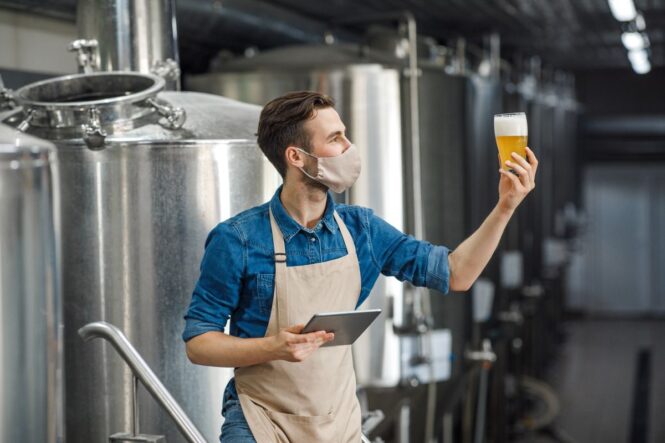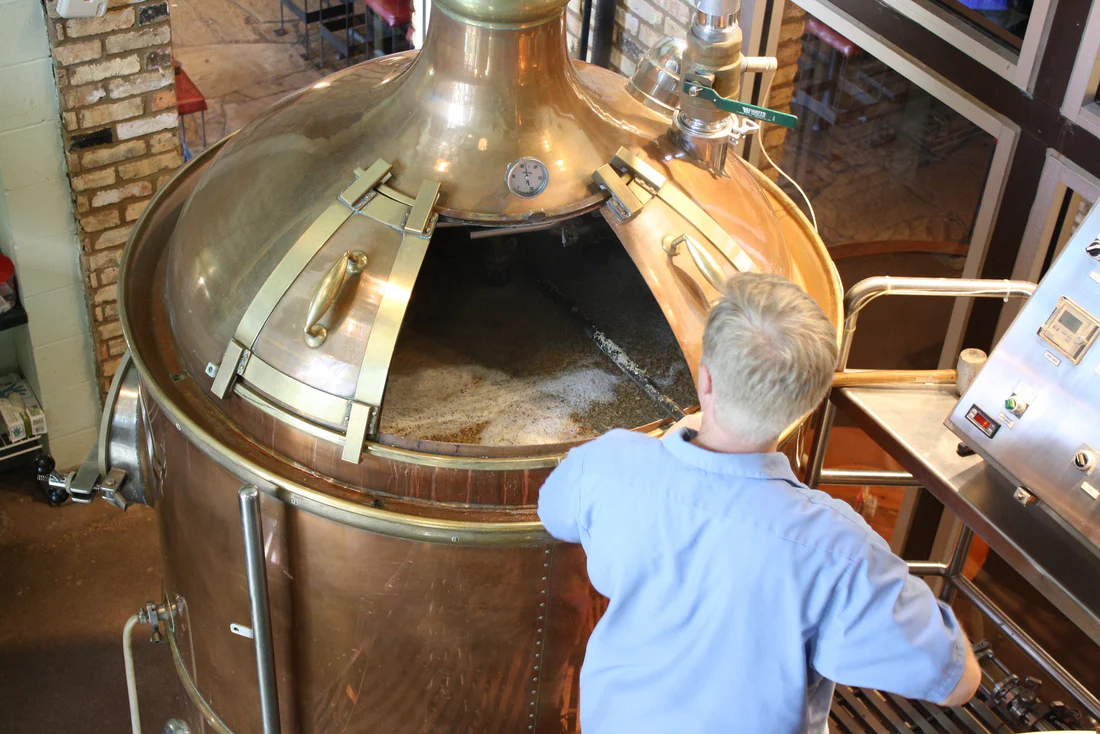Beer is not just a popular beverage but also a cultural icon that has shaped societies for centuries.
Understanding the basics of beer ingredients and the brewing process enriches the appreciation of this timeless drink.
What is Beer?
Beer is one of the oldest and most widely consumed alcoholic beverages in the world, with a history dating back to the early Neolithic era, around 10,000 BC.
The origins of beer are intertwined with the development of agriculture, particularly the cultivation of cereal grains. Ancient civilizations such as the Sumerians, Egyptians, and Chinese brewed beer, and it played a crucial role in their cultures and economies.
For instance, beer was used as a dietary staple, a form of currency, and an offering to deities.
Beer is defined as an alcoholic beverage made primarily from four essential ingredients: grains, yeast, water, and hops. The grains provide the sugars needed for fermentation, while the yeast converts these sugars into alcohol and carbon dioxide. Water, which makes up the majority of the beer, affects its flavor and quality.
Hops, the flowers of the hop plant, add bitterness, aroma, and flavor, balancing the sweetness of the malt and preserving the beer. These components work together through a series of brewing processes to create the diverse range of beers enjoyed today.
Key Ingredients of Beer

Now let us talk about the main ingredients of beer.
Grains (Malt)
Grains are the foundation of beer, providing the fermentable sugars that yeast converts into alcohol. The most commonly used grain in brewing is barley, prized for its high enzyme content and fermentable sugars.
However, brewers also use other grains such as wheat, rye, corn, and rice to achieve different flavors, textures, and appearances.
The malting process is crucial in preparing grains for brewing. It involves soaking the grains in water to initiate germination, then drying and cooking them to halt this process.
This develops the enzymes necessary to break down the starches into fermentable sugars during brewing. The degree of malting affects the flavor, color, and body of the beer.
Lightly roasted malts produce pale beers with mild flavors, while heavily roasted malts create dark beers with rich, robust tastes.
Yeast
Yeast is a microorganism responsible for fermentation, the process that converts sugars into alcohol and carbon dioxide. There are two main types of yeast used in brewing: ale yeast (Saccharomyces cerevisiae) and lager yeast (Saccharomyces pastorianus).
Ale yeast ferments at warmer temperatures and tends to float on the surface of the fermenting beer, a process known as top fermentation. This yeast type is known for producing beers with complex, fruity, and sometimes spicy flavors.
Lager yeast, on the other hand, ferments at cooler temperatures and sinks to the bottom of the fermenter, a process called bottom fermentation. Lagers are typically clean, crisp, and have a more subdued flavor profile compared to ales. The choice of yeast greatly influences the beer’s final taste, aroma, and alcohol content.
Water

Water is the most abundant ingredient in beer, making up more than 90% of its content. The quality and composition of water are crucial in brewing, as different minerals and pH levels can significantly affect the beer’s taste.
For example, water with high levels of calcium can enhance the clarity and stability of the beer, while bicarbonates can impart a harsh, bitter flavor if present in large quantities.
Brewers often treat water to achieve the desired profile for specific beer styles. For instance, the soft water of Pilsen, Czech Republic, is ideal for brewing pale lagers, while the mineral-rich water of Burton-upon-Trent, England, is perfect for brewing hoppy ales.
Hops
Hops are the flowers of the Humulus lupulus plant and serve multiple purposes in brewing. They act as a natural preservative, preventing spoilage and extending the beer’s shelf life. Hops also contribute to the beer’s aroma, flavor, and bitterness, balancing the sweetness of the malt.
Different hop varieties impart distinct characteristics to the beer. Some hops are known for their floral, citrusy, or piney aromas, while others add spicy, earthy, or herbal notes. The timing of hop additions during brewing also affects the beer’s profile.
Adding hops early in the boil extracts more bitterness, while late additions or dry hopping enhance the aroma and flavor without significantly increasing bitterness.
Brewing Process

Now let us talk about the basics of the brewing procedure.
Mashing
Mashing is the first step in the brewing process, where the malted grains are mixed with hot water to create a mash. This mixture is held at specific temperatures to activate enzymes that convert the starches in the grains into fermentable sugars.
The mashing process typically takes one to two hours and results in a sweet liquid called wort.
The temperature and duration of mashing can affect the wort’s composition and, consequently, the beer’s flavor, body, and alcohol content.
Lower temperatures favor the production of fermentable sugars, leading to a drier beer with higher alcohol content. Higher temperatures produce more unfermentable sugars, resulting in a sweeter, fuller-bodied beer.
Boiling
After mashing, the wort is boiled to sterilize it and extract flavors from the hops. Boiling is a critical step as it ensures that any harmful bacteria or wild yeast are killed, preventing contamination. The duration of the boil, typically 60 to 90 minutes, also affects the beer’s color and flavor.
Hops are added at various stages during the boil to achieve the desired balance of bitterness, flavor, and aroma. Early additions contribute to bitterness, while later additions enhance the hop flavor and aroma.
The boiling process also causes proteins to coagulate and settle out, improving the beer’s clarity.
Fermentation

Once the boil is complete, the wort is rapidly cooled and transferred to a fermentation vessel. Yeast is then added to the wort, initiating fermentation.
During this process, yeast consumes the fermentable sugars and produces alcohol and carbon dioxide. The fermentation process can take several days to several weeks, depending on the beer style and fermentation conditions.
Ale fermentation occurs at warmer temperatures, usually between 60-72°F (15-22°C), and is faster, often completing within a week.
Lager fermentation takes place at cooler temperatures, around 45-55°F (7-13°C), and is slower, sometimes taking several weeks to several months. The different fermentation temperatures and durations contribute to the distinct characteristics of ales and lagers.
Conditioning and Bottling
After fermentation, the beer undergoes a conditioning period where it matures and develops its final flavors.
The process can take anywhere from a few days to several months. During conditioning, the beer clarifies as yeast and other particles settle out, and the flavors meld and mellow.
The conditioned beer is then packaged, either in bottles, cans, or kegs. Additional carbonation may be added during packaging through priming (adding sugar to the beer) or forced carbonation (injecting carbon dioxide).
Proper bottling techniques ensure the beer remains fresh and retains its quality until consumed.
 Imagup General Magazine 2024
Imagup General Magazine 2024
